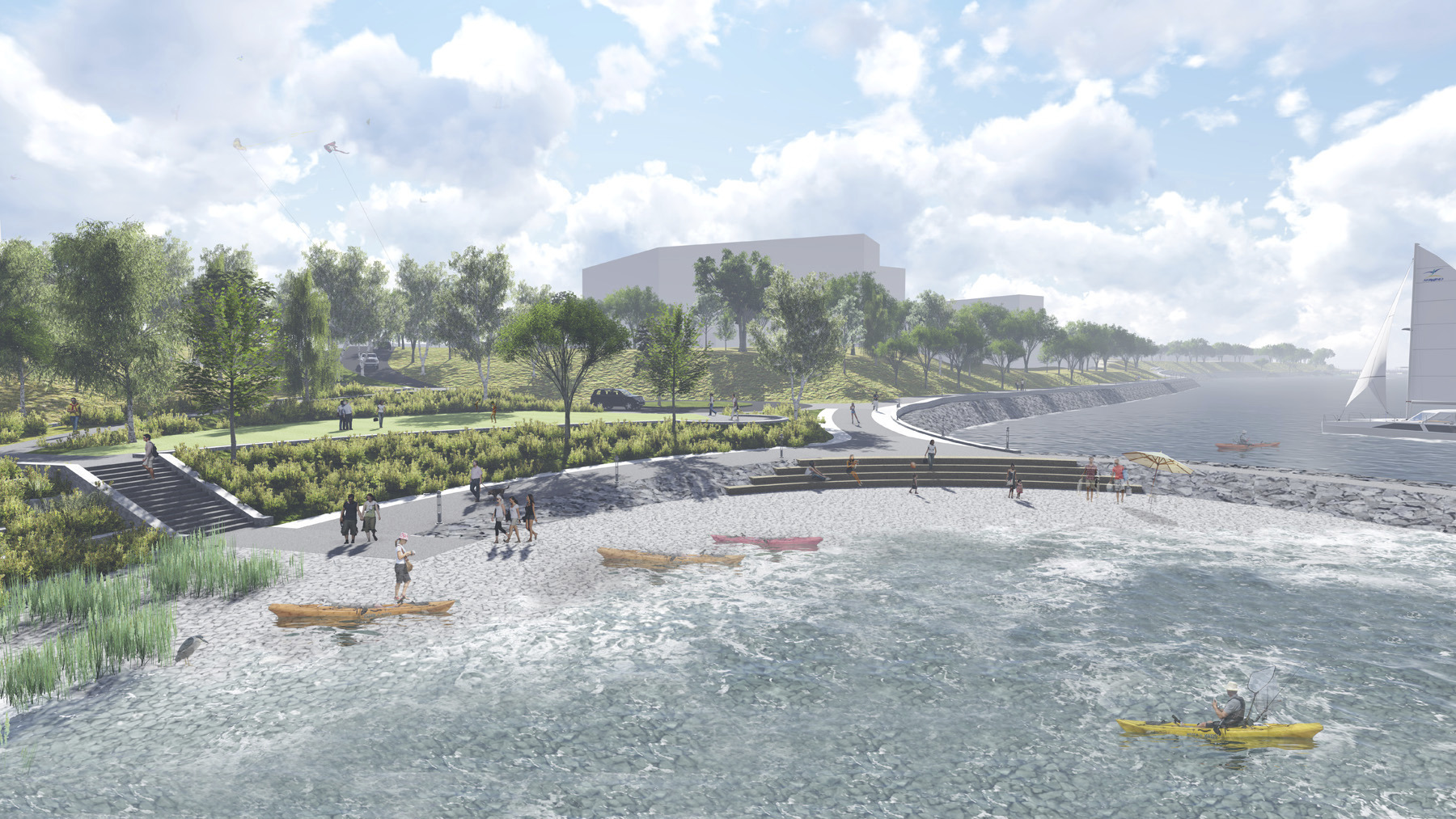
Weathering Future Storms: Resilience Strategies for Marinas
Published on January 17, 2022Building the capacity to withstand and recover from storms is essential to the effective operation of any waterside facility. Whether it’s a publicly owned harbor connected to miles of shoreline or a small, private marina with several hundred feet of frontage, proactive protection measures for both water-based and landside facilities are critical for minimizing damage, maintaining emergency access and egress, and reopening as quickly as possible after a storm event.
The standard planning assumption used to be that the recorded history of past storms was the best predictor of future storms, and the number and type of extreme events that could be expected in a particular location over time. Due to climate change impacts and compounding factors such as land subsidence and coastal erosion, historic trends are no longer an effective predictor of future storm risks.
Over the past decade there has been extensive analysis and discussion of increasing coastal vulnerability on all four major coasts of the U.S. Recent record-high lake levels in the Great Lakes along with sea-level changes and more powerful, higher precipitation storms along the Atlantic, Gulf, and Pacific coasts have brought this growing vulnerability into sharper focus. Climate change impacts are also affecting facilities along inland lakes, reservoirs, and rivers – as storms increase in severity, and flooding becomes flashier and less predictable.
The complex processes influencing all these changes raise several important questions. What’s the best way to assess and address the vulnerability of a marina given potential future shifts in water levels and wind/rainfall intensity? What options exist to better manage those risks and protect a facility and its shoreline?
Reassessing Marina Vulnerability
It probably comes as no surprise that the answer to that first question is there is no single best way to evaluate all these dynamically changing risks. However, there is a general framework of assessment that can be applied with varying levels of complexity to facilities and shorelines of different uses and sizes. The United States Geological Survey’s online Climate Resilience Toolkit provides a framework that can help owners, operators, planners, and engineers better understand and address vulnerabilities.
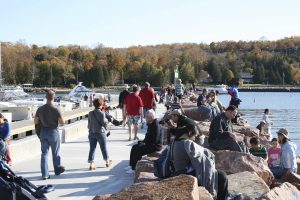
This toolkit helps individuals tasked with protecting their facilities from storm damage with a resource to educate staff and stakeholders as well as reassess their vulnerability over time. This toolkit will be updated as climate experts and meteorologists continue to better understand how changing water levels and storm/rainfall intensity will impact our oceans, rivers, lakes and reservoirs. It is also recommended that facilities should consult with an experienced engineer or planner to evaluate and manage emerging risks.
In addition to these new resources, a crucial component of any vulnerability assessment is some form of on-the-ground inspection of the facility and shoreline. This onsite fieldwork can be completed as part of strategic planning for future operations – as well as a review following a major storm event. A vulnerability assessment can also be updated based on maintenance inspections and repairs, so it informs an assessment of potential future upgrades and maintenance. However, it works best to perform this assessment, it is highly beneficial to repeat and update it over time.
Assessments for an individual facility or shoreline should also extend outside the immediate marina boundaries to portions of the uplands and adjacent shorelines and offshore areas. This helps capture vulnerabilities such as overland flooding risks, potential loss of roadway access during an emergency, and other potential impacts that can’t be fully managed or mitigated on a single site.
Measuring Storm Vulnerability and Resilience
Whether it’s a high-level qualitative assessment or detailed quantitative assessment, the key components of any marina storm vulnerability analysis are sensitivity, adaptive capacity, and identification of flood pathways. The sensitivity of a facility and its shoreline is defined as the extent to which negative impacts can occur because of a storm event. For example, a harbor master’s office that is likely to completely flood during a particular storm would have a higher sensitivity than a breakwater that would experience minor overtopping but remain stable during that event.
To truly understand a marina’s storm sensitivity, it is vital to consider both the annual risk of occurrence of a severe storm as well as its probability to occur over the life of the facility. While a storm event may have a 4% chance of occurring each year, it’s risk of occurrence over 25 years may be as high as 64%. Using both these parameters will help better assess a facility’s risk tolerance and select a storm event or multiple events to address in the vulnerability assessment.
Adaptive capacity is defined by a facility’s or a shoreline’s ability to withstand, recover from or adapt to the impact of more destructive storm events. For example, a harbor master’s office that has its mechanical and electrical systems elevated or on the roof will have a higher adaptive capacity than one with those systems located at grade. Adaptive capacity can also be inherent in natural shorelines and beaches, which can have a higher adaptive capacity than rock revetments as they are able to naturally restore themselves after an event.
Evaluating sensitivity and adaptive capacity plays a key role in understanding a marina’s overall vulnerability and looking at potential improvements to increase resilience. Pairing this with an understanding of the potential flood pathways helps in identifying the most effective protection strategies. Some of these flood risks might be unprecedented. For example, a record-setting, high-precipitation storm event (which are increasing globally) could pose a serious landside flood risk if a marina is flanked by hills or land that is higher in elevation.
Identifying and Combining Protection Measures
Depending on the source of potential storm impacts (stormwater flooding, wave overtopping, extreme winds, increased current velocity, etc.), different areas of the facility or site can be more vulnerable than others. Knowing this helps inform which protection strategies will be most effective or need to be undertaken first.
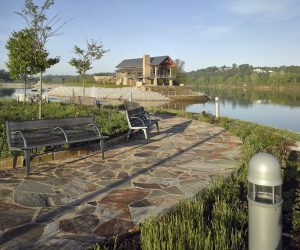
While higher water levels can cause flooding through overtopping of shoreline protection, stormwater infrastructure such as inland catch basins could also be subject to landside flooding during high-water storm events. High waves can flood steeper shorelines due to wave runup but not have the same impact on flatter slopes. If you add to this the complexity of combined events such as intense rainfall occurring with high water levels, existing stormwater management systems can quickly become overwhelmed. The result is landslide flooding until high water levels recede, which could be a matter of hours in tidal regions or extended periods of time for rivers and lakes.
Depending on a marina’s flood pathways, sensitivity and adaptive capacity, the needed protection strategies could require addressing a large section of shoreline or just the main entry way to a building. Effective protection strategies must take many factors into consideration, ranging from the facility’s environmental setting (urban vs. more natural area) to the required scale of implementation. Can the protection be deployed on an as-needed basis or does it require permanent infrastructure?
Additionally, time to implement can be a factor. Is a short-term protection strategy needed to stabilize a recently damaged facility? Or is a long-term solution needed that will require more extensive planning, design, permitting, and construction?
Protection strategies can generally be thought of as falling into three categories: deployable, hard infrastructure, and nature-based. Deployable solutions can provide automatic protection or require lead time to be installed. They range widely in application and types and can be effective in urban settings with space limitations or for small installations or areas where building higher is difficult. They also don’t impede views and access to the water during calm weather periods. Staff availability and a well-executed deployment plan are generally required to ensure that human error doesn’t result in failure of the protection.
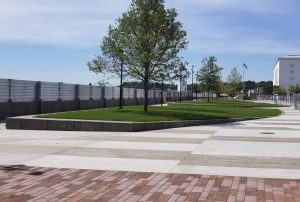
Hard infrastructure consists of more permanent marina and shoreline protection strategies such as breakwaters, revetments, flood walls, levees, and pump stations. While these structures can stand up better under extreme conditions, they tend to require more space, are more expensive, and can create visual and physical barriers for access to the water, particularly in areas likely to experience extreme lows as well as extreme highs in water levels. These protection measures can require less maintenance than other options, and if designed correctly can provide space for amenities (walking and biking paths, overlooks, seating, etc.).
Nature-based solutions can include offshore islands and reefs, beaches, wetlands, and green-infrastructure strategies to manage stormwater. Nature-based solutions along a shoreline can provide environmental benefits along with ongoing recreational opportunities. Most nature-based solutions need to be implemented with care as they can fail quickly if the wave environment is too intense. The habitat benefits can also be lost in areas that fluctuate between extreme high and low water levels or are subject to high stormwater flows. Implementation time can be long with these protection strategies as they typically require more extensive permitting review.
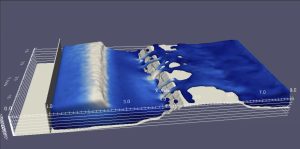
The most effective protection strategies tend to integrate all three categories, combining deployable, hard structural, and nature-based solutions to achieve the greatest range of benefits and enhance the resilience as well as the ongoing use and ecology of the facility. Nature-based shoreline improvements and green infrastructure can also facilitate outside funding and implementation support through grant programs, stakeholder donations, and local partnerships.
Protection measures can also be designed in ways that increase the everyday operational performance and market appeal of a marina. For example, by incorporating gravel or cobble beaches it can be feasible to reduce the overall height of a shoreline revetment and create expanded access to the water for paddle craft and kayaks – with direct connections to shoreline water trails and wetlands.
Climate risks are posing major economic risks. This is particularly true for marinas, which are often at ground-zero for some of the most extreme impacts of intensified storm events. By adopting proactive storm-protection strategies that also align with larger business goals, marina owners and operators can reduce their vulnerabilities, shorten their recovery time, and insure themselves for a more resilient future.
Chris Devick is a coastal engineer with SmithGroup. He can be contacted at chris.devick@smithgroup.com
| Categories | |
| Tags |






